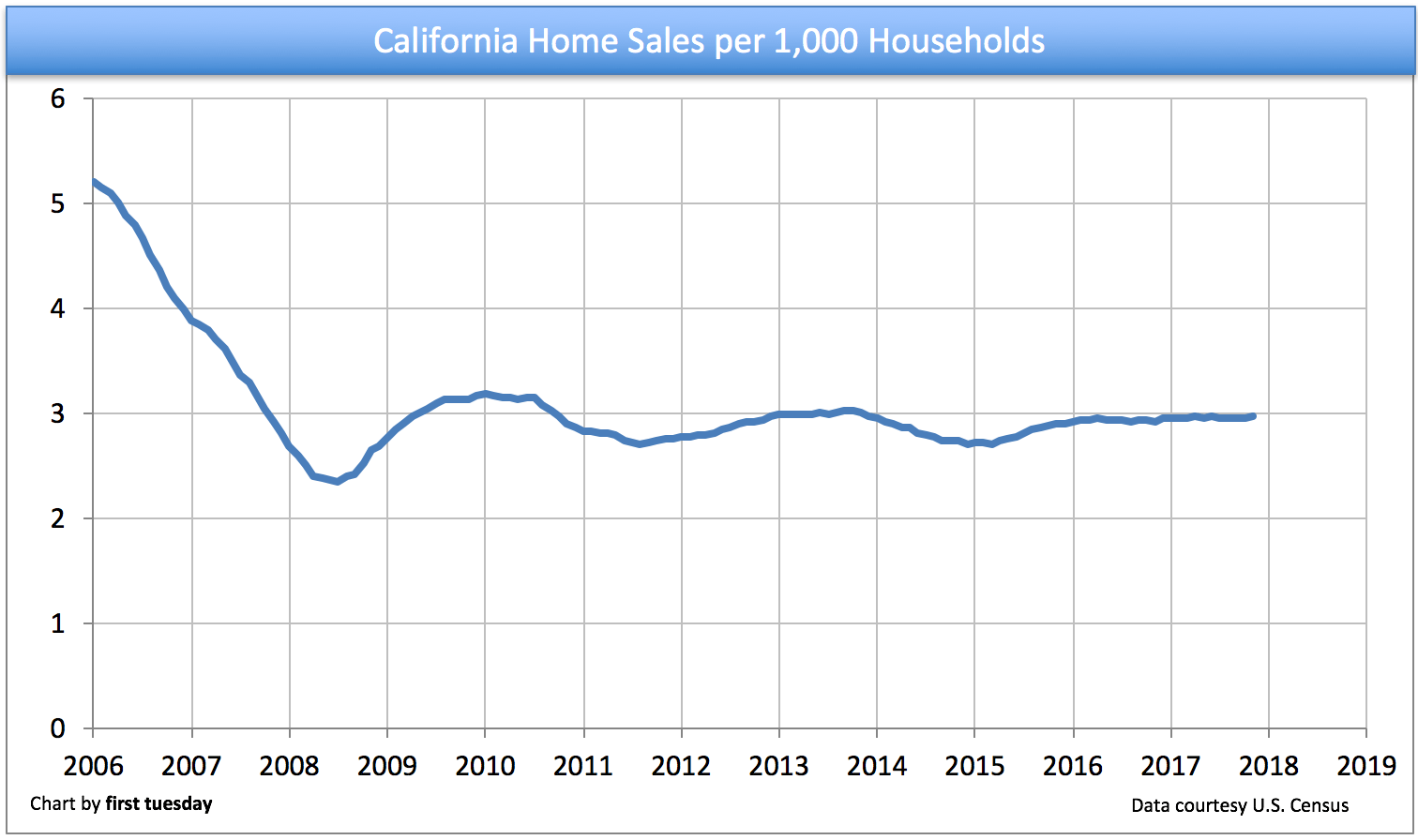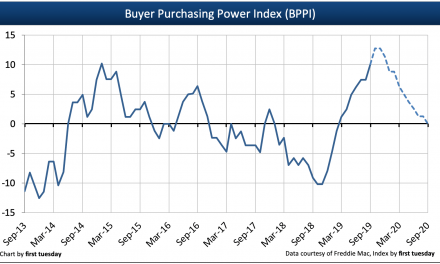On a monthly basis, 2.9 homes sold per 1,000 households at the end of 2017. Home sales have remained basically flat since 2012, with a brief dip in 2014-2015.
Home sales peaked during the Millennium Boom when five homes sold per 1,000 households each month during 2006. This figure plunged to bottom at 2.4 homes sold per 1,000 households in 2008. Home sales rebounded slightly in 2009, and have remained stuck at just under three homes sold per 1,000 households since then.
This dynamic is important to keep in mind when flooded with reports of historically low inventory and rapidly rising prices. While these factors are important to buyers, sellers and sales agents, the flat figure presented here tells a different story about demand.
Chart update 02/02/18
| Nov 2017 | Nov 2016 | Nov 2015 | |
| Home sales | 37,539 | 37,594 | 30,592 |
| Home sales per 1,000 households | 2.9 | 2.9 | 3.0 |
The chart above shows the number of homes sold each month per 1,000 households. In November 2017, 2.9 homes sold per 1,000 households — including owner and renter households. Home sales vary greatly from month-to-month. Therefore, to get a feel for the trend, this chart shows a 12-month moving average.
California home sales volume has remained relatively steady each year since rebounding from the 2007 housing crash. But is it possible the ratio of homes sold per household is flat because it’s at its historically appropriate level?
It’s possible, but not likely.
The number of homes sold per household is well below the pre-Millennium Boom average, according to Trulia. This points to a lack of homebuyer demand.
There a few reasons for this demand shortage:
- home prices began increasing in 2012 and are near or even past their Millennium Boom peak, depending on their location in California;
- low inventory means fewer sellers are listing their homes, meaning less choice for buyers;
- insufficient new construction exists in desirable coastal locations due to zoning challenges; and
- lingering doubt in the housing market following the housing crash and foreclosure crisis.
Further, rising interest rates mean homebuyers will continue to be discouraged in the coming years as their purchasing power is reduced, even as prices rise faster than their incomes can keep pace.
When will demand regain the steam it had during the Millennium Boom?
The next peak in home sales will occur due to a demographic convergence on the housing market from:
- Baby Boomers, the largest generation of homeowners, who every day are increasingly retiring, selling and buying replacement homes for their golden years; and
- Generation Y (Gen Y), the up-and-coming generation of first-time homebuyers who patiently waited for the economy to recover following the 2008 crash so they could become established in their careers and save up to become homeowners — albeit later than other generations due to their late start.
Baby Boomers will essentially swap homes with members of Gen Y, as Boomers sell their oversized suburban homes in favor of more manageable condominiums near family and services. Gen Y first-time homebuyers will eagerly buy, as inventory swells for the first time in years. This activity is expected to peak around 2020-2021.















